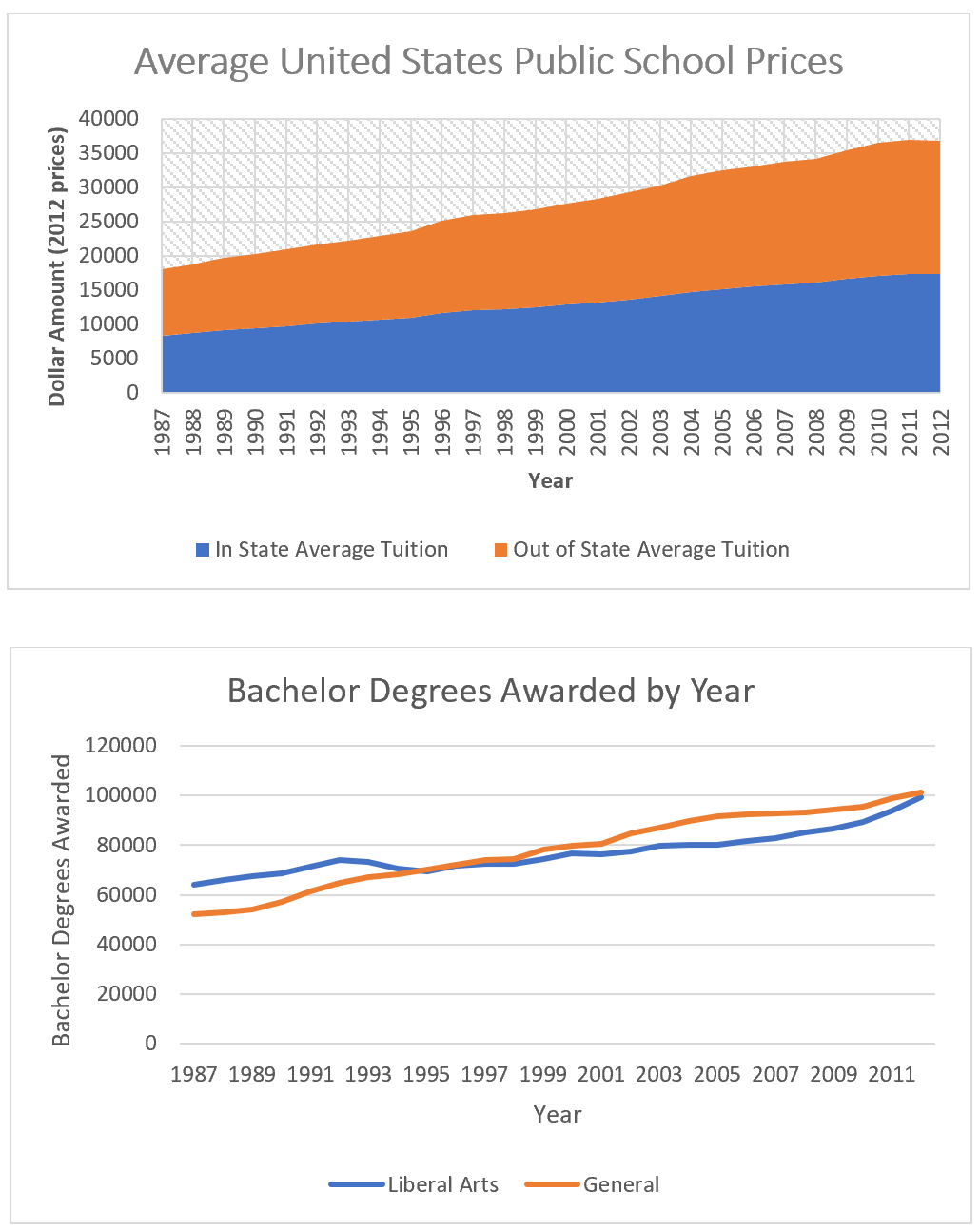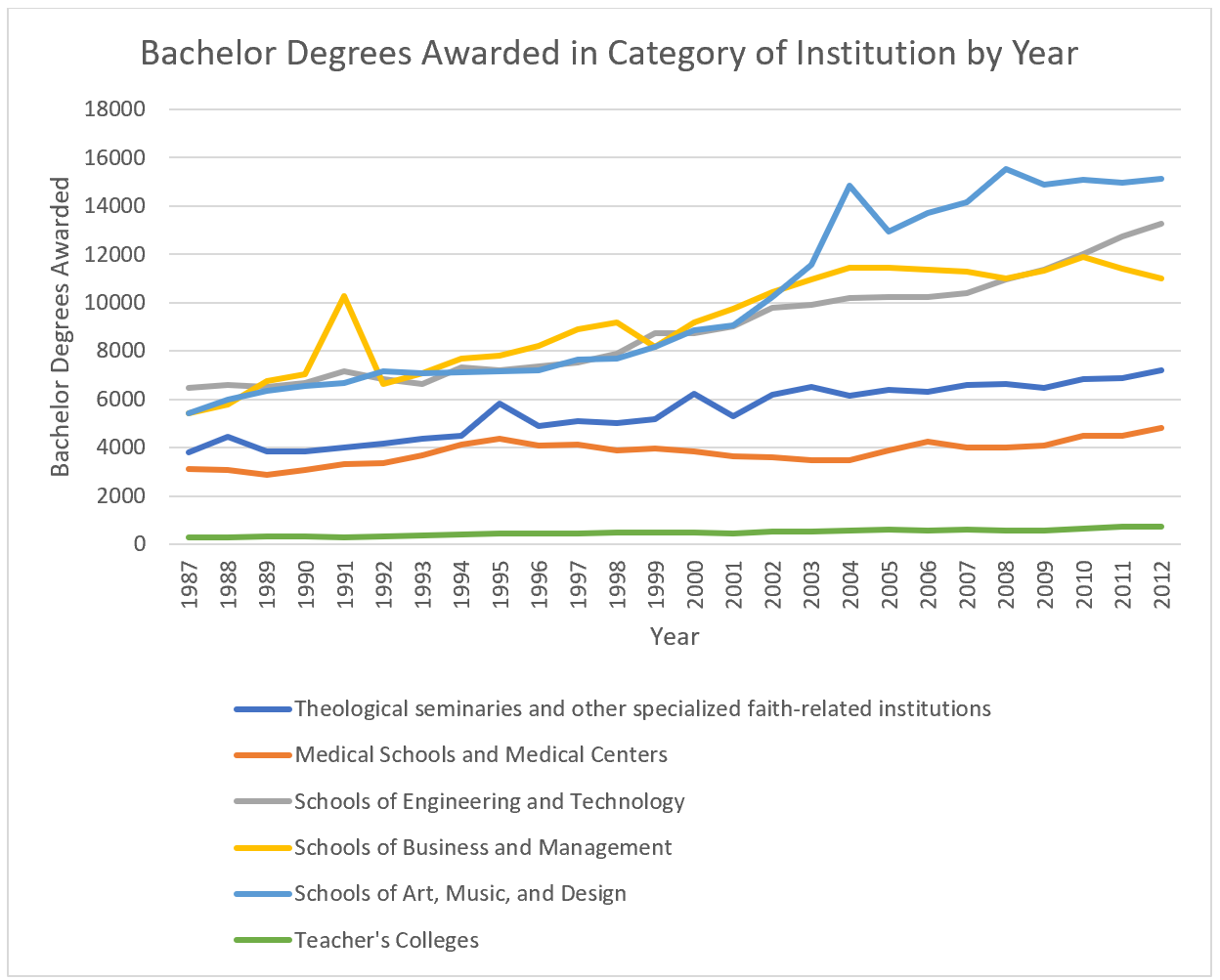This document will test the idea of how the privatization of
college and other governmental policies has shifted the overall cost of public,
private, and for-profit bachelor’s degrees upwards, leading to a change in
demand of more financially incentivized major choices. The main objective of
this research is to test if there is a demand shift in major choice that has
been created due to the rising overall price of higher education. Results
suggest that changes in government funding to institutions are associated with both
the price and the fields of studies that students are majoring in. Further analysis
suggests how certain time periods do offer a relationship between tuition
prices and major outcome, but the relationship is not consistent throughout the
time of heightened college costs.
Works Cited:
Armstrong, Elizabeth, and Laura
Hamilton. “Paying for the Party: How
College Maintains Inequality.” Harvard
UP, 2013.
Carnevale, Anthony, and Ban Cheah.
“From Hard Times to Better Times.” Center on Education and the Workforce, 2015,
files.eric.ed.gov/fulltext/ED558169.pdf.
Cooper, Melinda. “In Loco Parentis: Human Capital, Student
Debt, and the Logic of Family Investment.”
Family Values: Between Neoliberalism and the New Social
Conservatism. Zone Books, 2017. 215-257.
Hurlbut, Steve, et al. “Delta Cost
Project Database 1987-2015.” May 2017.
Pratt, Linda Ray. “Meeting of the
Conference on College Composition and Communication.” Meeting of the Conference
on College Composition and Communication. 1 Apr. 1998, Chicago.
“Salary Survey.” PayScale, www.payscale.com.
U.S. Department of Education,
National Center for Education Statistics. 2019. “Average total tuition, fees,
room and board rates charged for full-time undergraduate students in
degree-granting institutions, by level and control of institution: Selected
years, 1985–86 to 2016–17” Digest of Education Statistics, 2017 (NCES 2018-070)
Wang, Xuelli. “Why Students Choose STEM
Majors: Motivation, High School Learning, and Postsecondary Context of
Support.” American Educational Research Journal, SagePub, 2013,
doi.org/10.3102/0002831213488622.
“Why College Is So Expensive In
America.” YouTube, CNBC, 6 Feb. 2019, https://www.youtube.com/watch?v=aWJ0OaojfiA.



